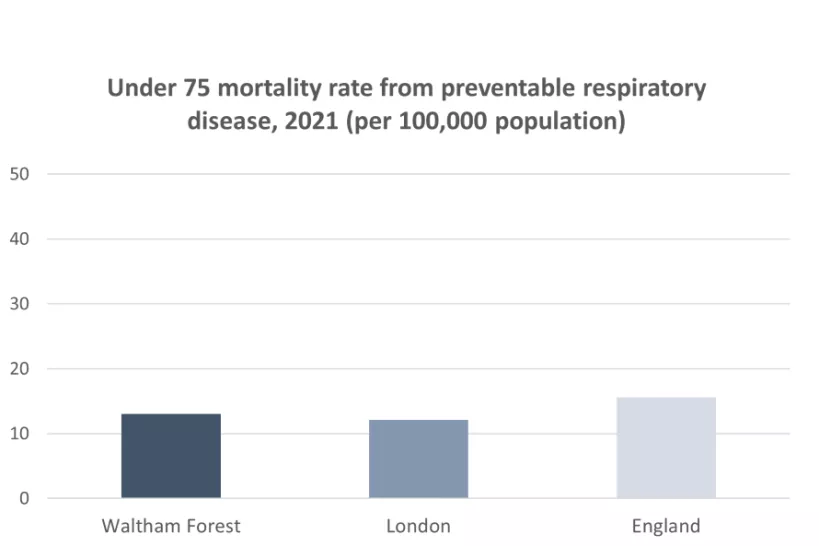Last updated: 3 June 2024
Next review: 3 December 2024
This content is part of the Waltham Forest JSNA. To see other JSNA content, visit the JSNA landing page
Premature mortality includes deaths occurring under the age of 75. Preventable mortality is defined as deaths where all or most deaths could potentially be avoided through effective public health interventions in the broadest sense.
Preventable respiratory diseases are linked to smoking (the major cause of chronic obstructive pulmonary diseases) and other environmental factors such as air pollution and occupational exposures.
The rate of under 75 mortality from preventable respiratory diseases has been mostly stable over the previous 20 years, at around 20 deaths per 100,000 in England, with rates being similar in Waltham Forest.
In 2021, Waltham Forest had a rate of 13.0 deaths per 100,000, compared to 12.1 in London and 15.6 in England (rates for the most recent year can’t be compared to previous years at the moment as ONS are currently revising previous population figures). Although Waltham Forest has rates that are lower than the national average, the difference is not statistically significant.
The difference in preventable deaths due to respiratory disease by deprivation is particularly pronounced, with the most deprived areas having rates that are more than three time as high as the least deprived areas (28.3 compared to 9.2 per 100,000 in 2021). This is likely due to differences in smoking rates, as well as differences in exposure to environmental factors.
Differences between males and females is smaller than for liver disease and cancer, though men still have significantly higher preventable respiratory mortality rates than women (17.3 per 100,000 compared to 14.0).

Source: OHID Public Health Outcomes Framework. Data based on Office for National Statistics source data. Date accessed: 7 July 2023.